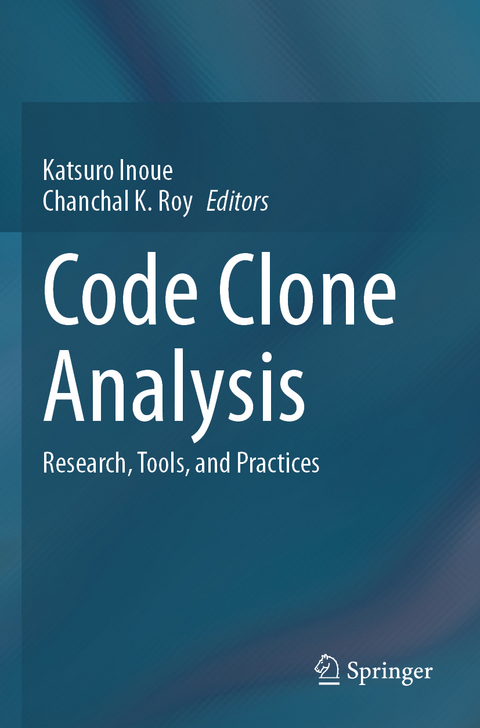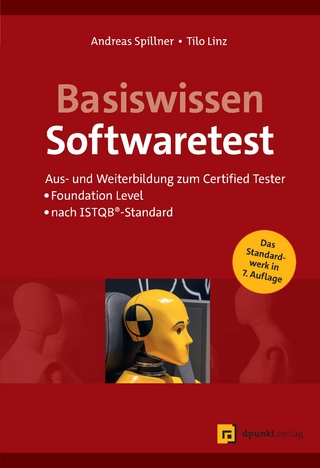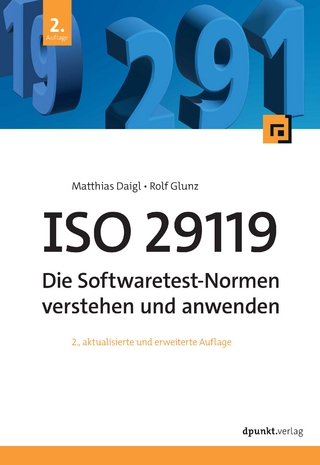
Code Clone Analysis
Springer Verlag, Singapore
978-981-16-1929-8 (ISBN)
The first chapter provides an introduction for readers who are inexperienced in the foundation of code clone analysis, defines clones and related terms, and discusses the classification of clones. The chapters that follow are categorized into three main parts to present 1) major tools for code clone analysis, 2) fundamental topics such as evaluation benchmarks, clone visualization, code clone searches, and code similarities, and 3) applications to actual problems. Each chapter includes a valuable reference list that will help readers to achieve a comprehensive understanding of this diverse field and to catch up with the latest research results.
Code clone analysis relies heavily on computer science theories such as pattern matching algorithms, computer language, and software metrics. Consequently, code clone analysis can be applied to a variety of real-world tasks in software development and maintenance such as bug finding and program refactoring. This book will also be useful in designing an effective curriculum that combines theory and application of code clone analysis in university software engineering courses.
Katsuro Inoue is a professor of Software Engineering Lab in the Department of Computer Science, Osaka University, Japan. He has been interested in program analysis, especially code clone analysis. He has been involved in the development of the code clone analysis tool CCFinder, and actively promoting code clone technology through workshops and seminars such as International Workshops on Software Clones and Code-Clone Seminars for industry people. Chanchal K. Roy is co-director of the Software Research Lab and a professor of Software Engineering/Computer Science at the University of Saskatchewan, Canada. He has been a leader in the field of code clone research for many years and has published many papers on code clones. He is one of the developers of the NiCAD clone detector and the clone benchmark database BigCloneBench, and a steering committee member of the International Conference on Software Clones.
Chapter 1: Introduction to Code Clone Analysis.- Chapter 2: CCFinderX.- Chapter 3: NiCad.- Chapter 4: SourcererCC.- Chapter 5: Oreo: Scaling Clone Detection Beyond Near-miss Clones.- Chapter 6: CCLearner.- Chapter 7: BigCloneBench.- Chapter 8: Visualization of Clones.- Chapter 9: Source Code Clone Search.- Chapter 10: Code Similarity in Clone Detection.- Chapter 11: Is Late Propagation a Harmful Code Clone Evolutionary Pattern? An Empirical Study.- Chapter 12: Summary on the Stability of Code Clones and Current Research Trends.- Chapter 13: Identifying Refactoring-oriented Clones and Inferring How They Can Be Merged.- Chapter 14:Clone Evolution and Management.- Chapter 15: Sometimes, cloning is a sound design decision!.- Chapter 16: IWSC(D): From Research to Practice.
| Erscheinungsdatum | 17.08.2022 |
|---|---|
| Zusatzinfo | 21 Illustrations, color; 36 Illustrations, black and white; X, 236 p. 57 illus., 21 illus. in color. |
| Verlagsort | Singapore |
| Sprache | englisch |
| Maße | 155 x 235 mm |
| Themenwelt | Informatik ► Software Entwicklung ► Qualität / Testen |
| ISBN-10 | 981-16-1929-8 / 9811619298 |
| ISBN-13 | 978-981-16-1929-8 / 9789811619298 |
| Zustand | Neuware |
| Informationen gemäß Produktsicherheitsverordnung (GPSR) | |
| Haben Sie eine Frage zum Produkt? |
aus dem Bereich


